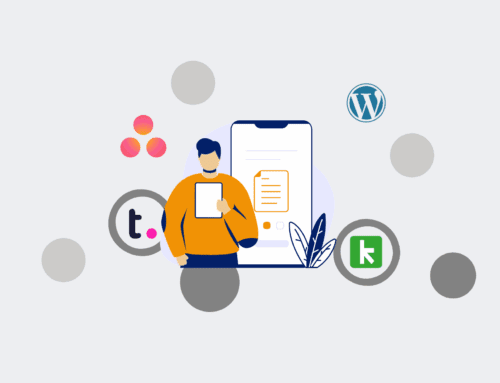A Glossary of Key Terms in HR Offboarding: Essential Terms for Employee Exits
Efficient and compliant employee offboarding is crucial for maintaining organizational security, safeguarding intellectual property, and ensuring a positive employer brand. For HR and recruiting professionals, understanding the core concepts of this complex process is not just about compliance; it’s about strategic risk management and enhancing the overall employee lifecycle. This glossary provides definitions for key terms related to HR offboarding, offering insights into their importance and how automation can streamline these critical functions.
Offboarding Process
The systematic series of steps an organization undertakes when an employee leaves the company, regardless of whether the separation is voluntary or involuntary. This comprehensive process encompasses administrative, legal, and operational tasks designed to ensure a smooth transition for both the departing employee and the organization. A well-defined offboarding process minimizes risks such as data breaches, ensures legal compliance, and protects company assets, all while maintaining a professional and respectful exit experience. Automating steps like task assignment, document generation, and system access revocation can significantly reduce manual effort and the potential for oversight.
Exit Interview
A structured conversation between a departing employee and an HR representative or manager, typically conducted to gather feedback on the employee’s experience, reasons for leaving, and suggestions for improvement within the organization. These interviews provide invaluable qualitative data that can inform changes in company culture, management practices, compensation, and overall employee retention strategies. Automating the scheduling and initial data collection for exit interviews, or even analyzing sentiment from collected feedback using AI, can make the process more efficient and yield actionable insights faster.
Knowledge Transfer
The systematic process of sharing critical information, skills, and expertise from a departing employee to their replacement or remaining team members. Effective knowledge transfer prevents loss of institutional memory, minimizes disruption to ongoing projects, and ensures business continuity. This can involve documentation of processes, one-on-one training, or creating shared repositories of information. Automation tools can help create structured knowledge bases, track progress of transfer tasks, and even prompt employees to document their roles before departure, ensuring that vital information is not lost.
Asset Recovery
The process of collecting all company-owned physical and digital assets from a departing employee. This includes items such as laptops, mobile phones, keys, security badges, corporate credit cards, and proprietary documents. Efficient asset recovery is vital for financial accountability, security, and preventing potential misuse or loss of company property. Automated checklists and communication workflows can prompt employees and managers about required returns, track asset status, and ensure all items are accounted for, reducing the administrative burden and potential for loss.
System Access Revocation
The critical security measure of terminating a departing employee’s access to all company systems, applications, networks, and data. This includes email accounts, CRM systems, HRIS, project management tools, and any proprietary software. Prompt and complete access revocation is paramount to preventing unauthorized data access, intellectual property theft, and other security breaches. Automating this process through integrations between HRIS and IT security systems can ensure immediate and comprehensive deactivation across all platforms upon an employee’s final day, significantly mitigating security risks.
Final Paycheck & Benefits Reconciliation
The process of ensuring the departing employee receives their final compensation accurately and on time, including any accrued but unused vacation pay, bonuses, or commissions. This also involves reconciling benefits, such as health insurance, retirement plans, and other perks, to ensure a smooth transition out of company coverage and compliance with regulations like COBRA. Automation in payroll systems can streamline these calculations and disbursements, reducing errors and ensuring adherence to local and federal labor laws, while also generating necessary benefits-related communications.
COBRA (Consolidated Omnibus Budget Reconciliation Act)
A federal law that gives employees and their families who lose health benefits the right to choose to continue group health benefits provided by their group health plan for limited periods of time under certain circumstances such as voluntary or involuntary job loss, reduction in hours worked, transition between jobs, death, divorce, and other life events. Organizations must provide timely and accurate COBRA notification to eligible employees during offboarding. HR automation platforms can automatically trigger COBRA notifications and tracking, ensuring compliance and preventing costly penalties.
Severance Package
Compensation and/or benefits offered by an employer to an employee upon termination of employment, typically in exchange for a release of claims against the company. Severance packages are often provided in situations of layoffs, downsizing, or mutual agreements and can include monetary payments, continued benefits, outplacement services, or other perks. The terms are usually outlined in a severance agreement. Automation can assist in generating customized severance agreements based on pre-defined policies and tracking the fulfillment of package components.
Confidentiality Agreement (Post-Employment)
A legal contract that prevents a former employee from disclosing or using an organization’s proprietary, sensitive, or confidential information after their employment has ended. This agreement protects trade secrets, client lists, business strategies, and other critical data from being shared with competitors or used for personal gain. Ensuring that departing employees sign and acknowledge these agreements is a vital part of offboarding. Digital signing platforms integrated with HR systems can automate the distribution, collection, and archival of these crucial legal documents.
Employee Experience (during offboarding)
The sum of all interactions and perceptions an employee has during their departure from an organization. A positive offboarding experience can significantly impact an organization’s reputation, reduce legal risks, and encourage former employees to become brand ambassadors or future rehires. Conversely, a poorly managed offboarding can lead to negative reviews, decreased morale among remaining staff, and potential legal issues. Automating administrative tasks allows HR to focus on personal interactions, providing empathy and clarity during a sensitive time.
Legal & Regulatory Compliance (Offboarding)
Adherence to all applicable federal, state, and local laws and regulations governing employee separation. This includes laws related to final pay, COBRA, unemployment benefits, non-discrimination, and proper documentation of the termination process. Non-compliance can lead to significant fines, lawsuits, and reputational damage. Automation can embed compliance checks into offboarding workflows, ensuring that all necessary legal steps are followed, required documents are generated, and notifications are sent out according to legal mandates.
Alumni Program
An initiative designed to maintain a relationship with former employees, fostering a network that can benefit both the individual and the organization. These programs can offer networking opportunities, professional development resources, re-recruitment potential (boomerang employees), and advocacy for the company brand. During offboarding, information about joining an alumni program can be shared. Automation can facilitate the invitation process, manage the alumni database, and distribute relevant communications to former employees, transforming leavers into advocates.
Offboarding Checklist
A comprehensive list of tasks and responsibilities that need to be completed by various stakeholders (HR, IT, manager, employee) during the offboarding process. This ensures no critical steps are missed, promoting consistency and compliance. A well-structured checklist covers everything from announcing the departure to collecting assets and revoking access. Implementing digital, automated checklists within a workflow automation platform (like Make.com) can assign tasks, set deadlines, send reminders, and track completion, dramatically increasing efficiency and reducing errors.
Employee Separation Agreement
A legally binding contract between an employer and an employee that outlines the terms and conditions of an employee’s departure. This agreement typically includes details about final pay, severance, benefits continuation, release of claims, confidentiality, and non-compete clauses. It protects both parties by formalizing the separation terms and preventing future disputes. Automated document generation tools can populate these agreements with employee-specific data, ensure all legal clauses are included, and prepare them for electronic signature, streamlining a crucial legal step.
Data Security (Offboarding)
The measures taken during employee offboarding to protect an organization’s sensitive information and digital assets from unauthorized access, loss, or theft. This involves ensuring all company data stored on personal devices is wiped, personal data is removed from company devices, and all system access is terminated promptly and completely. Robust data security protocols are paramount in an increasingly digital world. Automation can enforce these protocols by orchestrating simultaneous access revocations, data backups, and device wipe commands across integrated systems upon an employee’s exit.
If you would like to read more, we recommend this article: A Step-by-Step Guide to Building an Automated Offboarding Workflow in Make.com







